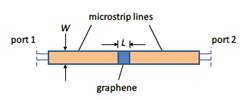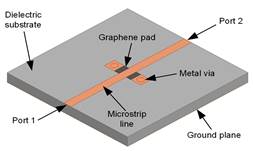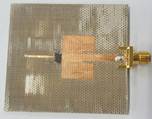Graphene-based Tunable Microstrip Attenuators and Patch Antenna
Stefano Bellucci, INFN-Laboratori Nazionale di Frascati, Italy
Stefano Bellucci (1),
Muhammad Yasir (1,2), Maurizio Bozzi (1,2), Luca Perregrini (2), Silvia Bistarelli (1), Antonino Cataldo (1)
(1) NEXT Nanotech Lab, National Institute of Nuclear Physics, Frascati National Laboratories, Italy
(2) Dept. of Electrical, Computer and Biomedical Engineering, University of Pavia , Italy
Recently graphene got a lot of attention for its potential use in microwave applications owing to its tunability properties. Graphene changes its resistance values from very high values to very low values upon the application of a voltage bias. This is particularly interesting in the design of microwave and millimeter wave components and structures. The use of few-layer graphene (FLG) is particularly interesting due to its ease of production and low cost. The ease of production and low cost of the graphene flakes however does not affect its tunability properties.
There are several possible topologies for designing tunable attenuators based on FLG flakes. FLG flakes is put in between a microstrip line. The microstrip line is connected to a voltage network analyzer on both its ports. Bias tees are used to bias the FLG flakes from either side. Increasing the bias voltage through the bias tees reduces the graphene resistance thus increasing the transmission through the microstrip line. A schematic of this topology is as under.

Fig. 1. Microstrip attenuator based on graphene
Another possible topology for the design of tunable microwave attenuator is by using grounded vias on either side of the microstrip line. These vias symmetrically placed on either side of a microstrip line. The microstrip line and the vias are separated from each other by the help of FLG flakes. When biased, the grounded vias shorts out the microstrip line reducing the transmission through the microstrip line. This configuration can be seen in the figure 2. Such a configuration results in better tunability with a comparatively narrower bandwidth.

Fig. 2. Innovative graphene attenuator based on grounded vias.
FLG flakes can also be used in the design of tunable patch antennas. A patch antenna is connected to a shorted stub on its radiating edge through the FLG flakes. Biasing the FLG flakes reduces their resistance thus increases the impact of the stub on the patch antenna. This results in an elongating effect of the patch antenna thus shifting the radiating frequency. Varying the applied bias voltage results in varying the radiating frequency. This design topology can be seen in the figure 3.

Fig. 3. Tunable patch antenna based on graphene.
The interesting properties of graphene can be exploited in designing several other kinds of microwave structures ranging from tunable phase shifters to matched load circuits among several others. Thus it has the potentiality of revolutionizing the future of microwave structures.
Acknowledgements: We thank the Graphene Flagship Core 1 of the EU for support
Keywords: tunable attenuators, tunable patch antennas, voltage-controlled antennas, graphene-based microwave structures.
